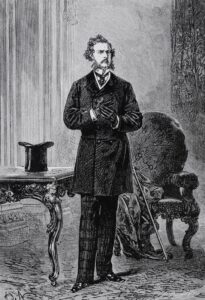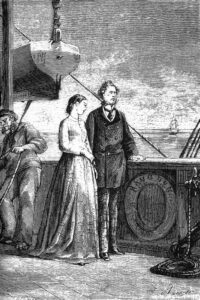Jules Verne was a writer of fiction about the frontiers of technology and its impact on society, rather than a science fiction writer. Hence, Around the World is about the potential for the latest technologies in travel and communications to shrink the globe. It reflects a world that is increasingly structured, organised and standardised, a world in which it is possible to plan a journey using train and boat schedules of frequent and reliable services. The novel was first published in 1873.
Photography was another technology that was developing technologically and in its application at the time. Dry gelatin plates were invented by Richard Maddox in 1871 and quickly made photography a much simpler: photographers roamed the world collecting images of the exotic for eager audiences back home.
Given Verne’s fascination with modernity he might have had the novel’s protagonist, Phileas Fogg, take a camera to record his travels. The urgency of the trip could reasonably be expected to preclude dawdling with still-cumbersome equipment, but it may not have been more time consuming than Fogg’s efforts to get visa stamps on his passport as evidence of his journey. A group photograph of a Cook’s Tour in Italy (?) in 1868 predates Around the World by five years. The original French publication of the book was illustrated by drawings that seem to stand in for holiday snaps.
Verne makes just two reference to photography. The first as the adventure begins.
‘On the early days, a few bold spirits, the women principally, backed him [Fogg], especially after the Illustrated London News had published a likeness of him from a photograph left among the records of the Reform Club.’
Fogg is subsequently suspected of a bank Robbery.
‘His photograph, left at the reform club with those of all the other members, was examined, and reproduced feature for feature the man [the robber] whose description had been obtained at the inquiry.’
The photograph goes from club portrait to publicity shot to mug shot. It is claimed that Alphonse Bertillon invented modern mug shot in 1888, but Verne seems to have anticipated the idea by 15 years. The original was most likely made by the collodion process and reproduced as an engraving.


